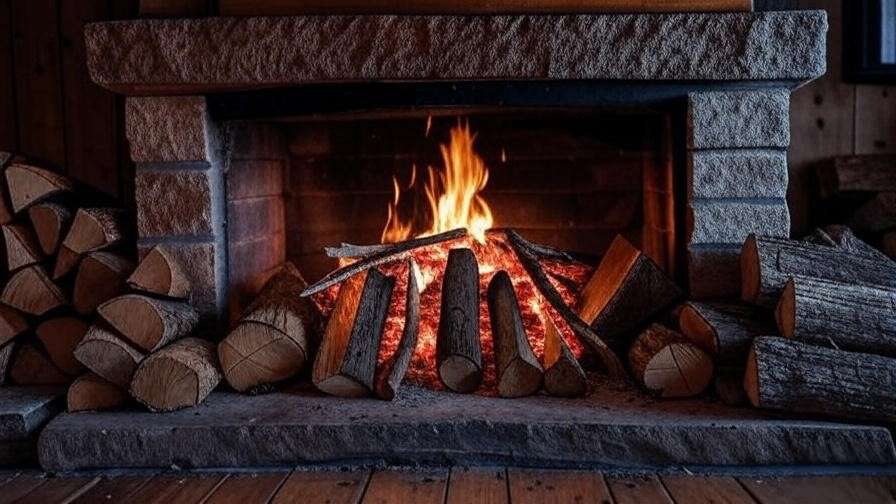Picture this: a chilly evening, a mug of hot cocoa in hand, and a roaring fire casting a warm, golden glow across your living room. The secret to this perfect scene? Oak tree firewood. Renowned for its exceptional heat output, long-lasting burn, and delightful smoky aroma, oak firewood is the gold standard for cozy, efficient fires. Whether you’re heating your home, hosting a backyard fire pit gathering, or smoking a savory brisket, oak delivers unmatched performance. In this comprehensive guide, we’ll explore why oak tree firewood stands out, how to choose and store it, and expert tips to maximize its benefits. As a tree care specialist with over a decade of experience in arboriculture, I’ll share everything you need to know to make oak your go-to firewood choice. Let’s spark up the knowledge! 🔥
What Makes Oak Tree Firewood Special? 🌟
The Unique Properties of Oak Wood
Oak is a hardwood powerhouse, prized for its dense, tightly grained structure. This density translates to a high BTU (British Thermal Unit) output, typically ranging from 24 to 29 million BTUs per cord, depending on the species. For context, that’s enough heat to keep your home toasty for hours! Red oak tends to burn hotter and faster, while white oak offers a slower, steadier flame with less smoke. When properly seasoned, oak’s moisture content drops to 15-20%, ensuring a clean burn with minimal creosote buildup in your chimney. This makes oak not only efficient but also safer for your fireplace or woodstove. 🌲
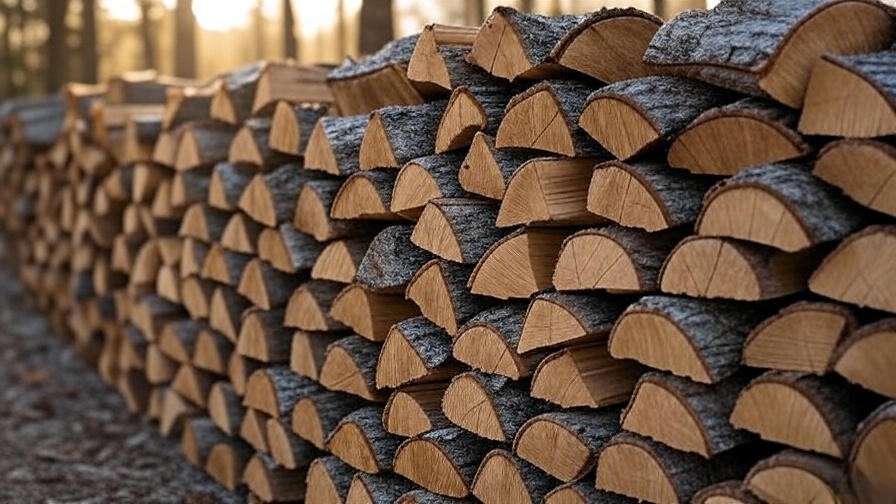
Why Oak Outshines Other Firewood Types
Compared to other popular firewoods like pine, maple, or ash, oak consistently ranks at the top. Softwoods like pine burn quickly but produce excessive smoke and sparks, posing safety risks. Maple burns well but lacks oak’s staying power. Ash is a solid contender, but oak’s balance of heat, burn time, and low sparking makes it superior. According to arborist Jane Thompson, a seasoned firewood supplier, “Oak is the backbone of any serious firewood stockpile. Its reliability and versatility are unmatched.” Whether you’re warming your home or creating ambiance, oak delivers a clean, steady flame that’s hard to beat. 🔥
Benefits of Using Oak Tree Firewood 🔥
High Heat Output for Maximum Warmth
Oak’s high BTU rating means it generates intense, consistent heat. A single cord of seasoned oak can produce enough energy to heat a medium-sized home for an entire evening. For example, red oak’s 26-29 million BTUs per cord make it ideal for quickly warming a space, while white oak’s 24-26 million BTUs offer sustained heat for overnight fires. This efficiency reduces the need to constantly add logs, saving you time and effort. 🏡
Long-Lasting Fires for Cozy Evenings
One of oak’s standout features is its long burn time. Thanks to its dense structure, a single oak log can burn steadily for 2-3 hours in a well-maintained fire. Imagine hosting a winter gathering where the fire stays strong all evening, no constant tending required! This makes oak perfect for cozy nights in or extended outdoor gatherings around a fire pit. 🕰️
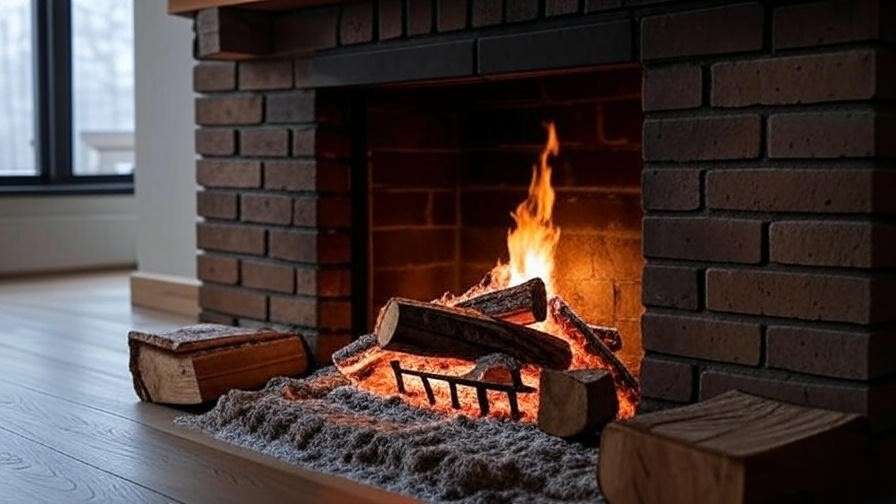
Pleasant Aroma and Minimal Smoke
Seasoned oak firewood produces a mild, pleasant smoky scent that enhances the ambiance of any fire. Unlike pine, which can release heavy, acrid smoke, oak burns cleanly when properly seasoned, minimizing indoor air pollution and chimney creosote. This makes it a favorite for both indoor fireplaces and outdoor cooking, where its subtle flavor elevates smoked meats and vegetables. 🍖
Eco-Friendly and Sustainable Choice
When sourced responsibly, oak firewood is an environmentally friendly heating option. Oak trees are abundant in many regions, and sustainable forestry practices ensure minimal ecological impact. Look for suppliers certified by the Forest Stewardship Council (FSC) to ensure your firewood comes from responsibly managed forests. By choosing oak, you’re supporting renewable energy and reducing reliance on fossil fuels. 🌍
How to Choose the Best Oak Tree Firewood 🪓
Identifying Quality Oak Firewood
Not all oak firewood is created equal. High-quality oak should be well-seasoned, with a grayish bark, visible cracks on the ends, and a hollow sound when two logs are tapped together. A moisture meter is your best friend here—aim for 15-20% moisture content for optimal burning. Unseasoned or “green” oak, with moisture above 30%, burns poorly, produces excessive smoke, and increases creosote risks. Invest in a moisture meter for precise measurements, and always inspect your firewood before buying. 💧
Red Oak vs. White Oak: Which Is Right for You?
Choosing between red and white oak depends on your needs. Red oak, with its slightly higher BTU output, is perfect for quick, intense heat—ideal for chilly evenings when you need warmth fast. White oak, on the other hand, burns slower and produces a cleaner flame, making it great for overnight fires or smoking food. For example, pitmasters often prefer white oak for its consistent heat and mild flavor when smoking brisket or ribs. Test both to see which suits your fireplace or cooking style best! 🍗
Where to Source Oak Firewood
Finding a reliable supplier is key to getting quality oak firewood. Local sawmills, tree services, or certified firewood dealers are great starting points. Ask suppliers about their seasoning process and whether their wood is FSC-certified. Avoid roadside vendors selling unseasoned oak, as it can lead to disappointing fires and chimney issues. “Always ask for details on how the wood was seasoned,” advises firewood supplier Mark Reynolds. “Good suppliers will be transparent about their process.” 🛒
Preparing and Storing Oak Firewood for Optimal Performance 📦
Seasoning Oak Firewood Properly
Seasoning oak is critical for top performance. Freshly cut oak can have up to 50% moisture, making it unsuitable for burning. To season it:
- Cut and Split: Cut logs to 16-18 inches (fireplace standard) and split them to 4-6 inches wide to speed drying.
- Stack: Arrange logs in a single row with good airflow, off the ground on pallets or rails.
- Store: Place the stack in a sunny, well-ventilated area and cover only the top to protect from rain.
- Wait: Allow 6-12 months for seasoning, depending on your climate. Check moisture levels before use.
Properly seasoned oak burns hotter, cleaner, and safer. 🪵
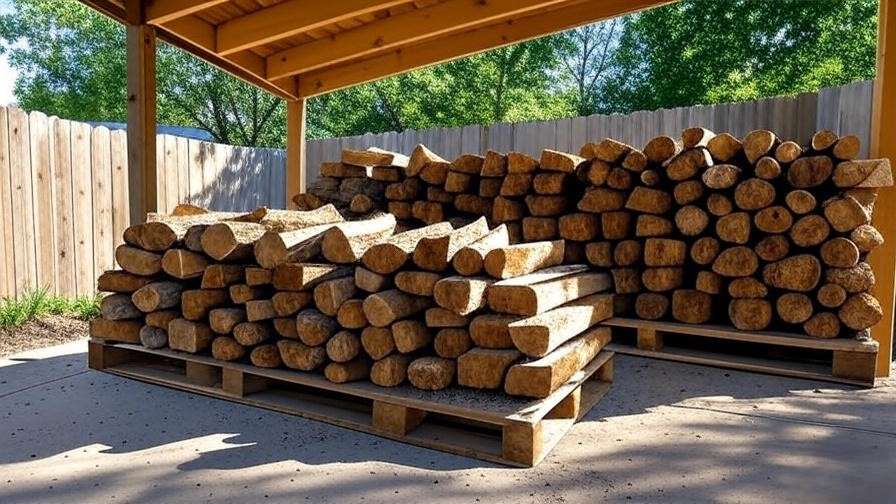
Best Practices for Storing Firewood
Storing oak correctly preserves its quality. Elevate stacks on pallets to prevent ground moisture absorption. Cover only the top with a tarp, leaving sides open for airflow. Store in a dry, sunny location, away from your home to avoid pests like termites. A common mistake is stacking wood against a wall or in a damp shed, which traps moisture and encourages mold. For a visual guide, picture a tidy stack with logs neatly aligned, air circulating freely, and a waterproof cover shielding the top. 🏠
Tools You’ll Need for Preparation
To prepare oak firewood, equip yourself with:
- Chainsaw: For cutting logs to size.
- Splitting Maul: For splitting dense oak logs.
- Moisture Meter: To confirm seasoning (aim for 15-20% moisture).
- Firewood Rack: To keep stacks organized and elevated.
Safety tip: Always wear gloves, safety glasses, and steel-toed boots when cutting or splitting oak, as its hardness can be tough on tools and hands. 🧤
How to Burn Oak Firewood Safely and Efficiently 🔥
Building the Perfect Fire with Oak
For a clean, efficient fire, try the top-down method:
- Place two large oak logs at the bottom of the firebox, parallel to each other.
- Add a layer of smaller logs or kindling perpendicularly on top.
- Top with fire starters (like newspaper or natural firelighters) and light.
This method ensures a steady burn with minimal smoke, as the fire gradually ignites the denser oak logs below. Add logs sparingly to maintain airflow and prevent smothering the flame. 🔥
Maintaining Your Fire for Maximum Heat
To keep your oak fire burning efficiently, add logs one at a time and maintain good airflow by not overloading the firebox. Use a poker to adjust logs and ensure flames can breathe. “A well-maintained fire with oak can last hours without much effort,” says chimney sweep Laura Bennett. Regularly remove ash buildup to prevent it from stifling the fire. For overnight fires, use larger white oak logs for a slow, steady burn. 🕰️
Safety Tips for Burning Oak Firewood
Burning oak safely requires vigilance:
- Chimney Maintenance: Schedule annual chimney inspections to remove creosote, which can cause chimney fires.
- Fireplace Safety: Use a sturdy fireplace screen to catch sparks and keep flammable items at least 3 feet away.
- Supervision: Never leave a fire unattended, especially with children or pets around.
- Carbon Monoxide Detector: Install and test detectors to protect against potential fumes.
These precautions ensure your oak fire is both cozy and safe. 🚒
Creative Uses for Oak Firewood Beyond Heating 🎨
Cooking and Smoking with Oak Firewood
Oak firewood isn’t just for warmth—it’s a favorite among pitmasters for its rich, smoky flavor that enhances grilled and smoked foods. White oak, in particular, imparts a mild, slightly sweet taste that pairs beautifully with brisket, ribs, fish, or vegetables. For example, smoking a beef brisket with oak firewood for 10-12 hours creates a tender, flavorful dish with a perfect bark. Here’s a simple recipe to try:
- Oak-Smoked Brisket: Season a 5-pound brisket with salt, pepper, and garlic powder. Smoke over white oak at 225°F for 10-12 hours, maintaining a steady fire with seasoned logs. Wrap in butcher paper halfway through to lock in moisture. Rest for 1 hour before slicing. 🍖
Oak’s consistent heat and clean burn make it ideal for low-and-slow cooking, ensuring professional-quality results at home.
Outdoor Fire Pits and Ambiance
Oak firewood shines in outdoor fire pits, creating a warm, inviting atmosphere for gatherings. Its low sparking nature makes it safer than softwoods like pine, reducing the risk of embers igniting nearby materials. A well-seasoned oak fire burns steadily, allowing you to enjoy hours of conversation without constant tending. For a unique twist, mix oak with a small amount of cherry wood to add a sweet, aromatic note to the fire. Tip: Arrange logs in a teepee shape for better airflow and a taller, more dramatic flame. Your backyard will feel like a cozy retreat! 🏕️
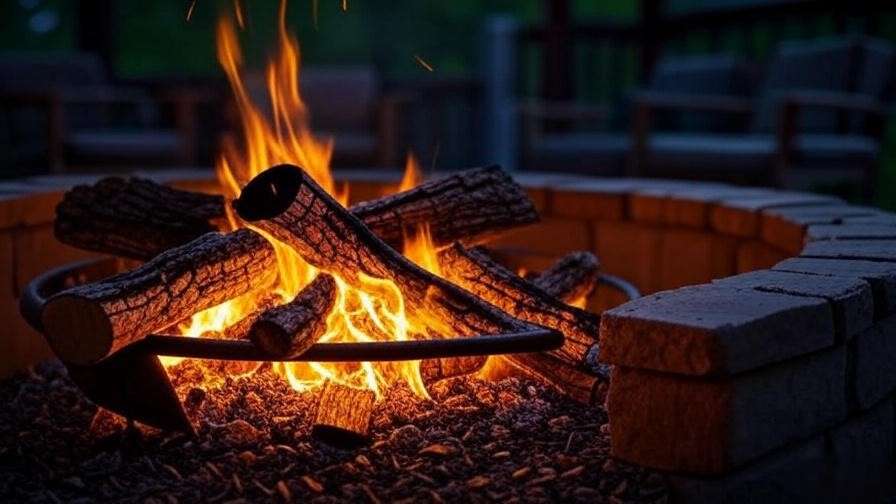
Sustainable Crafts with Oak Scraps
Don’t let small oak pieces go to waste! Leftover logs or scraps can be repurposed into sustainable crafts. Try these ideas:
- Rustic Coasters: Slice small oak rounds (1-inch thick), sand them smooth, and seal with food-safe sealant for charming drink coasters.
- Garden Mulch: Chip small oak pieces into mulch for garden beds, adding nutrients to the soil as they decompose.
- Natural Decor: Use oak branches or logs as bases for candle holders or rustic shelving for a farmhouse aesthetic.
These projects not only reduce waste but also showcase oak’s beauty and durability. 🛠️

Common Questions About Oak Tree Firewood (FAQs) ❓
- How long does oak firewood need to season? Oak typically requires 6-12 months to season properly, depending on climate and storage conditions. In humid areas, aim for the longer end to achieve 15-20% moisture content.
- Is oak firewood safe for indoor fireplaces? Yes, when properly seasoned, oak burns cleanly and safely indoors. Ensure your chimney is inspected annually to prevent creosote-related fire risks.
- Can oak firewood be used for cooking? Absolutely! Oak, especially white oak, is a top choice for smoking meats and vegetables due to its mild, versatile flavor.
- How does oak compare to other hardwoods? Oak outperforms maple in burn time and hickory in smoke production, offering a balanced combination of heat, longevity, and cleanliness.
- Where can I find sustainable oak firewood? Seek FSC-certified suppliers or local arborists who prioritize responsible harvesting. Check reviews to ensure quality and sustainability. 🌍
Conclusion: Make Oak Tree Firewood Your Go-To Choice 🏡
Oak tree firewood is the ultimate choice for anyone seeking warmth, efficiency, and versatility. Its high heat output, long-lasting burn, and pleasant aroma make it perfect for fireplaces, woodstoves, fire pits, and even culinary adventures. By choosing quality, well-seasoned oak and following proper storage and burning techniques, you’ll enjoy cozy, safe fires all season long. Plus, with sustainable sourcing, you’re making an eco-friendly choice that supports responsible forestry. Ready to elevate your fire game? Source high-quality oak firewood today, try our smoking recipe or craft ideas, and share your experiences in the comments below. Here’s to warm, memorable evenings by the fire! 🔥

